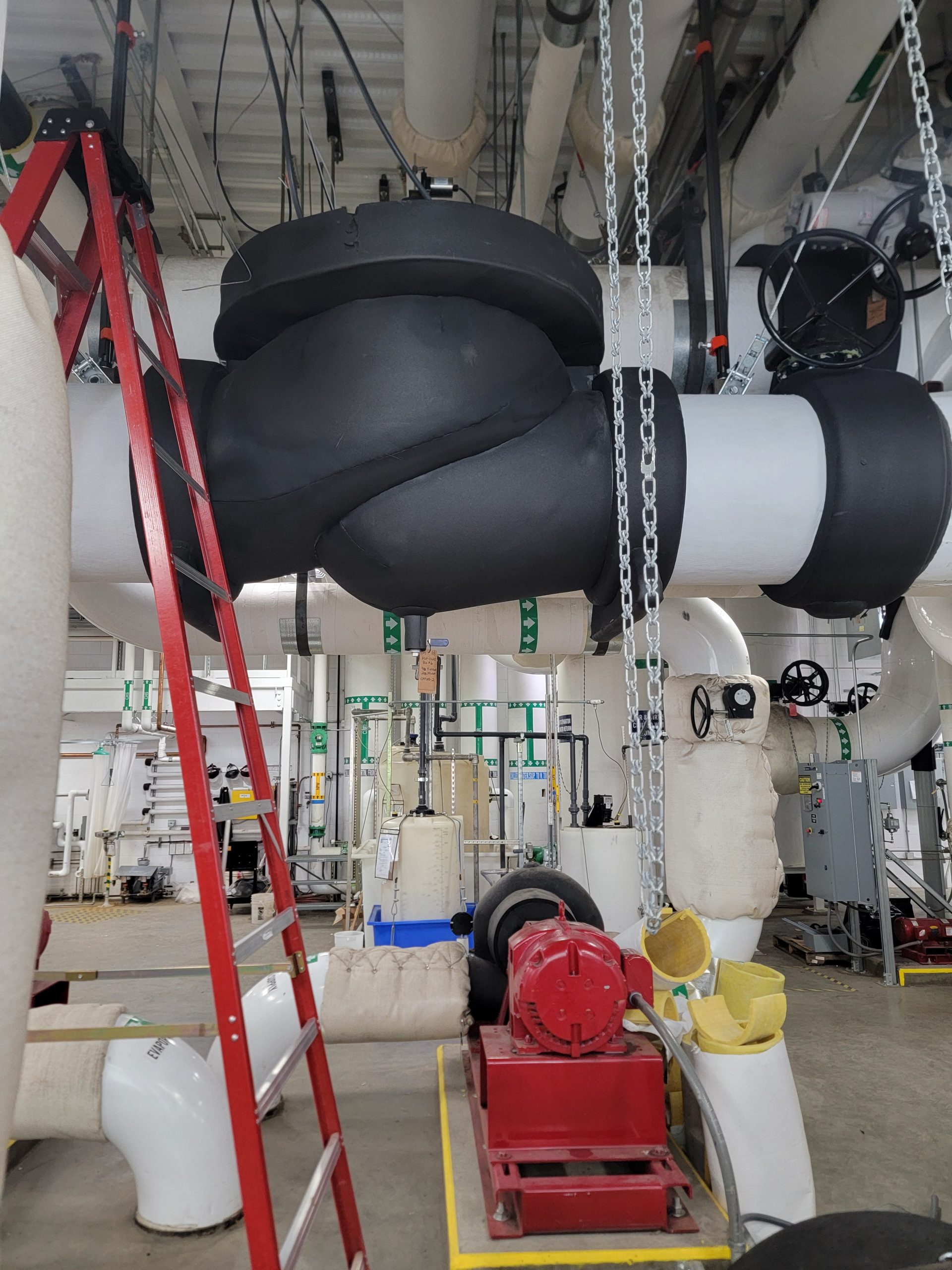A detailed analysis of high-performance valves that can meet flow demands, provide efficiency, and harness the full potential of thermal energy storage systems for water utilities and private infrastructure.
By Bill Moore – Eastern Regional Manager – Cla-Val Company
Thermal energy storage (TES) systems are growing in demand due to their ability to provide cost savings and expand cooling capacity as well as their resiliency and sustainability for commercial and industrial facilities. Simply put, TES systems store thermal energy (chilled water or hot) for later use. This is beneficial by storing excess energy produced during periods of low demand for use during peak times.
These systems are used in centralized campuses, large hospitals, and military installations to meet increased cooling loads without the need to invest in additional chillers, cooling towers, and pumps. Another area of increased demand for these systems is large data centers, which require cooling systems to manage the significant heat generated by their IT equipment.
There are more than 5,300 data centers in the United States, and the market is projected to grow from $26.67 billion in 2023 to $55.83 billion by 2028, with a compound annual growth rate (CAGR) of 15.92%. All this demand for TES has put pressure on water utilities and private infrastructure to supply these facilities with large amounts of water.
Control valves are applied in water production, transmission, and storage facilities. Integral to the design of a TES system is the proper selection and configuration of valves that control flow and pressures. Selecting the proper valves is vital to its performance.
Due to the volume and size of these systems, automatic control valves can provide many advantages over actuated ball or butterfly valves. These benefits include:
Greater Range and Precision of Modulating Control
Globe-style automatic control valves have greater rangeability for flow and pressure applications. Due to their linear design, automatic control valves excel at modulating flow and maintaining tight control, providing infinite positioning capabilities. In contrast, ball and butterfly valves have a more limited control range.
Improved Resistance to Cavitation
Cavitation can be an issue in some TES systems, causing valve damage, noise, and reduced efficiency. Automatic control valves are less susceptible to cavitation and can be supplied or retrofitted with an anti-cavitation trim, if needed.

Simpler and More Cost-Effective Maintenance
Automatic control valves have fewer moving parts and are generally less complex than actuated ball or butterfly valves. This makes them less expensive and easier to maintain over the long term, requiring less overhauls or repairs.
Versatility to Perform Multiple Functions
Many automatic control valves can be configured to perform additional functions beyond just flow control, such as pressure regulation, metering, and more.

Reliable Backup Functionality
They often incorporate backup hydraulic functionality. This ensures continued operation even during a power or control system failure.
Customization and Upgradeability
These valve types can easily be modified in the field to add new features or capabilities without requiring a full valve replacement.
Durability and Reliability
Thermal energy storage systems operate continuously. So, the selected valves must be durable enough to withstand extended use without frequent maintenance or replacement. Features like drip-tight closure and field-retrofittable upgrades can help ensure long-term performance.
Software Integration
Consider valves that integrate with advanced sizing software, such as Cla- Val’s ComparFlow and Cla-CAV. These software programs can model and compare the control capabilities of different valve types in a specific TES application, helping engineers make informed decisions about the most suitable valve solution.
It is also worth considering Revit drawings for implementation into the design. Some manufacturers have this capability, which can save a lot of time.
“We have supplied hundreds of these automatic control valves for TES systems,” says Mark Gimson, Director of Marketing and International Sales.
“These range in size from mega projects with Google and Microsoft to universities like Princeton, as well as commercial offices and research facilities. We typically work with engineering firms to spec out the best configurations and supply Revit drawings.”
Thermal energy storage systems contribute to the decarbonization of energy systems, which is one of the reasons industries and utilities are embracing this new wave. It is yet another tool for transitioning to more sustainable energy practices.
According to Allied Market Research, the global thermal energy storage market size was valued at $20.8 billion in 2020 and is projected to reach $51.3 billion by 2030, growing at a CAGR of 8.5% from 2021 to 2030.
Mechanical, electrical, and plumbing engineers should collaborate with local valve manufacturers to harness the full potential of these TES systems. This partnership can help with the selection of an appropriate valve type tailored to the specific conditions, correct size, and configuration to meet flow demands, improving the system’s reliability and efficient performance.



